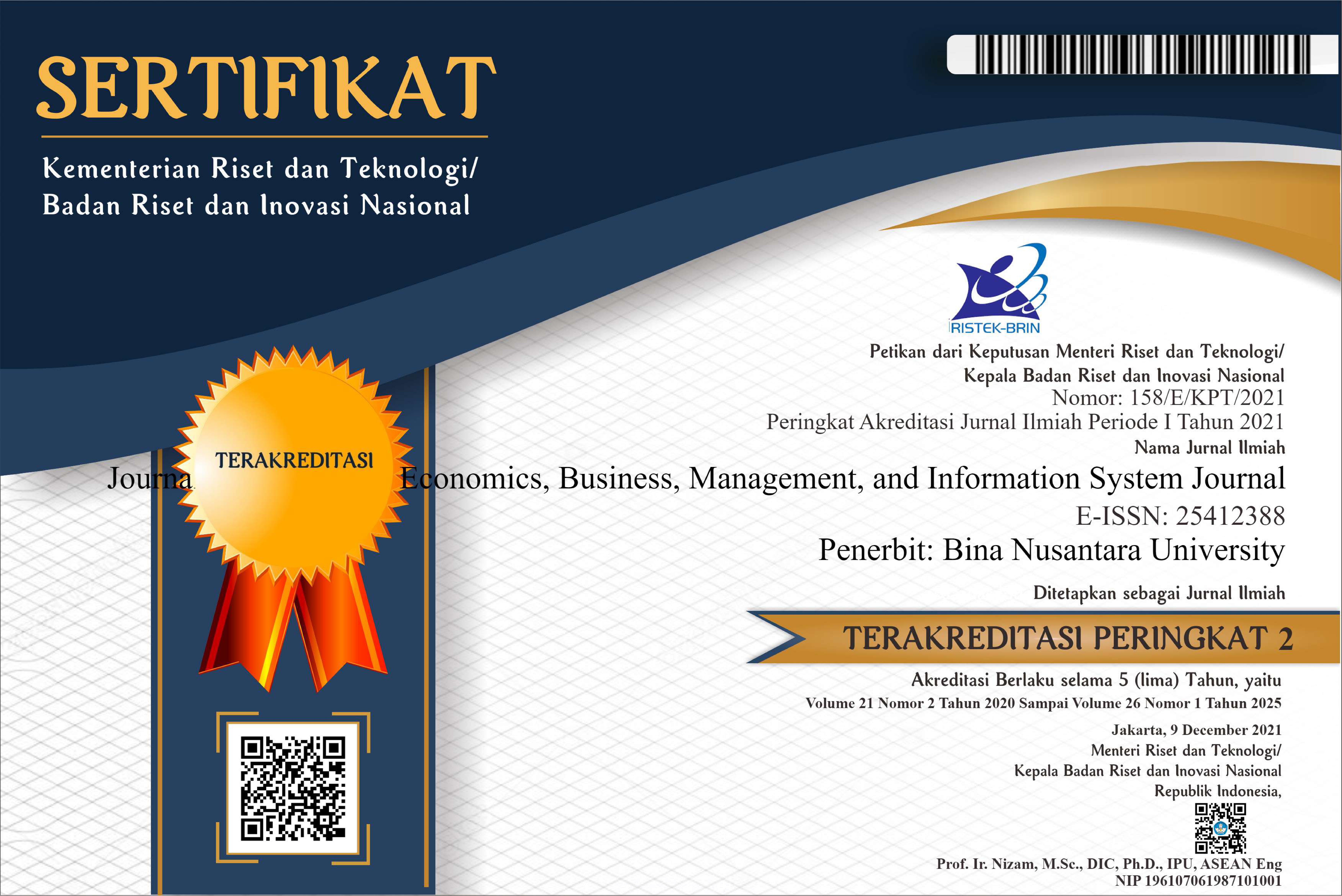Pengaruh beberapa variable terhadap Pemilihan Metode Penilaian Persediaan pada Perusahaan Manufaktur
DOI:
https://doi.org/10.21512/tw.v10i1.716Keywords:
company size, inventory intensity, variability cost of sales, accounting earning variabilityAbstract
This study aims to provide empirical evidence whether the size of the company, inventory intensity, variability cost of sales, and accounting earnings variability influence the choice of inventory valuation methods. The object of this research was manufacturing companies listed in Indonesia Stock Exchange in the period 2005-2009. Thirty nine samples in this study were taken by several criteria. Statistical analysis tool used in this research was logistic regression with a significance level of 5%. From the test result, it was obtained that either partially or simultaneously, company size, intensity of inventory, price variability of goods sold, and income variability have a significance level above 5%. This shows that these variables did not significantly influence the selection method of inventory valuation.
Plum Analytics
References
Abdullah, S., dan Muslim A.D. (Agustus, 2004). Apakah metode FIFO dan rata-rata memang berbeda: Bukti empiris dari Bursa Efek Jakarta. Metode Riset Akuntansi, Auditing dan Informasi, 4(2), 151- 172.
Anton. (2010). Evaluasi Pengaruh Variabilitas Persediaan, Variabilitas Laba Akuntansi, dan Ukuran Perusahaan terhadap Pemilihan Metode Akuntansi Persediaan pada Perusahaan Manufaktur yang Terdaftar di BEI pada periode 2005-2008. Tesis S1 Tidak Dipublikasikan, Jakarta: Universitas Tarumanagara.
Baridwan, Z. (2000). Intermediate accounting, Jakarta: Erlangga.
Ikatan Akuntan Indonesia. (2009). Standar akuntansi keuangan, Jakarta: Salemba Empat.
Kieso, D.E., Weygant, J.J., dan Terry, D.W. (2007). Intermediate accounting, 12th ed., Danvers: Wiley.
Lee, C.J., and Hsieh, D.A. (1985). Choice of inventory accounting methods: Comparative analysis of alternative hypothesis, Journal of Accounting Research, Autumn, pp: 468-485.
Logianto, S., dan Murtanto. (2004). Analisis metode akuntansi persediaan terhadap price earning ratio. Jurnal Bisnis dan Akuntansi, 6(2), 189-207.
Mukhlasin. (2002). Analisis pemilihan metode akuntansi persediaan berdasarkan richardian hipotesis. Jurnal Ekonomi dan Bisnis Fakultas Universitas Katolik Indonesia Atmajaya, Februari, 21-39.
Nasser, E.M, dan Rasita, E. (2005). Pemilihan metode akuntansi persediaan berdasarkan richardian hipotesis, teory agency, dan politicial cost serta pengaruhnya terhadap PER. Jurnal Ekonomi STEI, 4(31), 19-41.
Niehaus, G.T. (1989). Ownership structure and inventory method choice, Accounting Review, 64 (April), 269-284.
Taqwa, S., Sugiyanto, F.X., dan Daljono. (2003). faktor-faktor yang mempengaruhi pemilihan metode akuntansi persediaan pada perusahaan manufaktur di BEJ. Jurnal Riset Akuntansi Indonesia, 2, 100- 118.
Tuanakotta, T.M. (2000). Teori akuntansi, buku kedua, Jakarta: Lembaga Penerbit Fakultas Ekonomi Indonesia.
Watts, R.L., dan Zimmerman, J.L. (1986). Positive accounting theory, Prentice-Hall International Edition.
Wolk, H.I., dan Tearney, M.G. (1977). Accounting theory, 4th ed., Southwestern College Publishing.
Downloads
Published
Issue
Section
License
Authors who publish with this journal agree to the following terms:
a. Authors retain copyright and grant the journal right of first publication with the work simultaneously licensed under a Creative Commons Attribution License - Share Alike that allows others to share the work with an acknowledgment of the work's authorship and initial publication in this journal.
b. Authors are able to enter into separate, additional contractual arrangements for the non-exclusive distribution of the journal's published version of the work (e.g., post it to an institutional repository or publish it in a book), with an acknowledgment of its initial publication in this journal.
c. Authors are permitted and encouraged to post their work online (e.g., in institutional repositories or on their website) prior to and during the submission process, as it can lead to productive exchanges, as well as earlier and greater citation of published work.
USER RIGHTS
All articles published Open Access will be immediately and permanently free for everyone to read and download. We are continuously working with our author communities to select the best choice of license options, currently being defined for this journal as follows: Creative Commons Attribution-Share Alike (CC BY-SA)

















